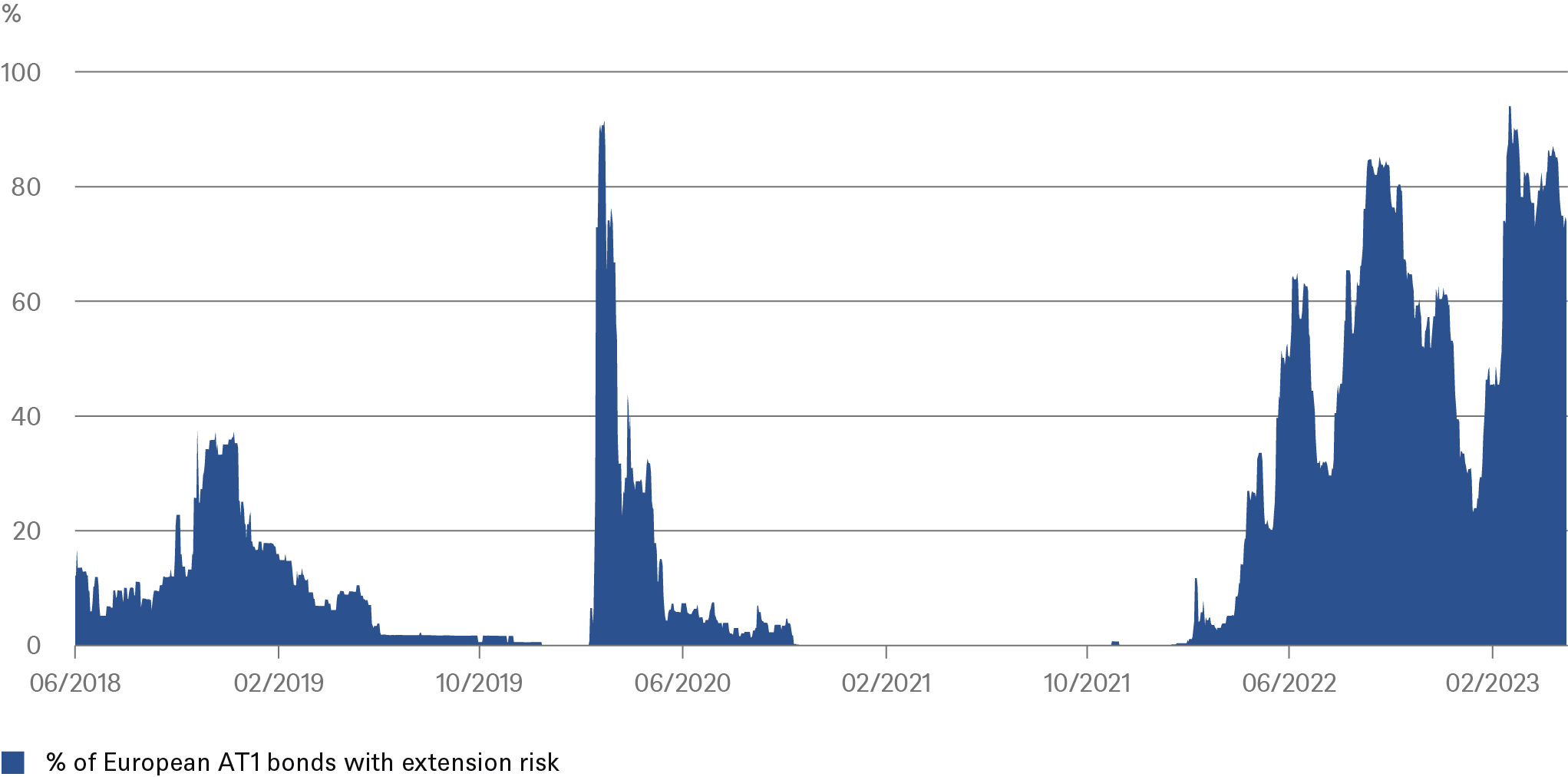- Home »
- Insights »
- CIO View »
- Chart of the Week »
- European bank bonds show surprising anxiety
In March, banks' AT1 bonds, short for additional capital one bonds, gained unexpected notoriety due to the innovative bailout of Credit Suisse (CS). At the time, investors and issuers alike feared that the Swiss model could set a precedent, i.e. that AT1 capital might be used once again to cover losses sooner than expected. But that has not happened so far; in the first place because it was indeed a Swiss peculiarity, which the ECB immediately labelled as not applicable to euro area banks. Moreover, the CS imbroglio did not trigger a conflagration in Europe's banking sector.[1]
Nevertheless, the CS episode did not leave the AT1 bond market unscathed, as our Chart of the Week shows. The chart can be read as a stress indicator, because it shows how many of the outstanding AT1 bonds are priced as if they would run to perpetuity, i.e. as if the issuers would never exercise their right to call them. There might be reasons why a bank does not call its outstanding AT1 bonds, but it is more than common market practice for banks to call their bonds and issue new ones.
Percentage of AT1 bonds that are priced as if they were held to perpetuity

Sources: Bloomberg Finance L.P., DWS Investment GmbH as of 5/31/23
Our chart, nevertheless, reveals a remarkable anomaly, as it is trading at about the same highly stressed level as during the March crisis. This is not in line with our view of the state of the European banking sector, which we would consider to be well capitalized and with sufficient liquidity. Nor does it correspond to what share prices or bond default insurance prices of financial institutions indicate. And above all, it does not correspond to what is currently seen in the market. With the exception of six bond issues - which corresponds to only about 1% of the AT1 market - all AT1 bonds have been called at the first possible moment. Even when it was not optimal for economic reasons. And so the banks still seem to fear reputational risk. "From our perspective, AT1 bonds are pricing in too much risk, which can really only be due to the fact that entire investor groups have abandoned this segment since the CS incident. In our view, this makes this segment even more attractive at the moment," says Michael Liller, Senior Credit Portfolio Manager at DWS.



